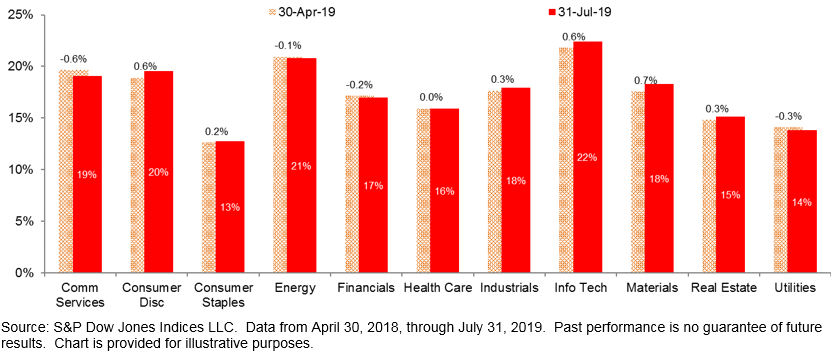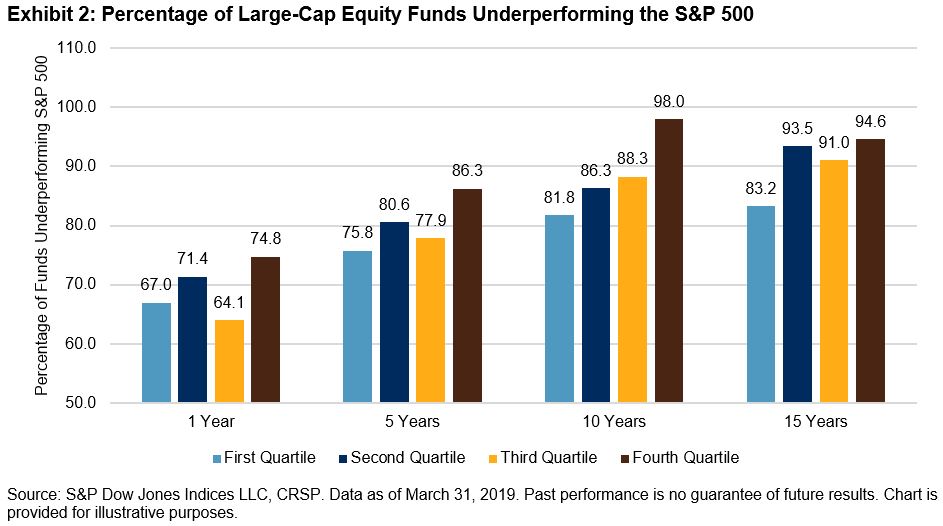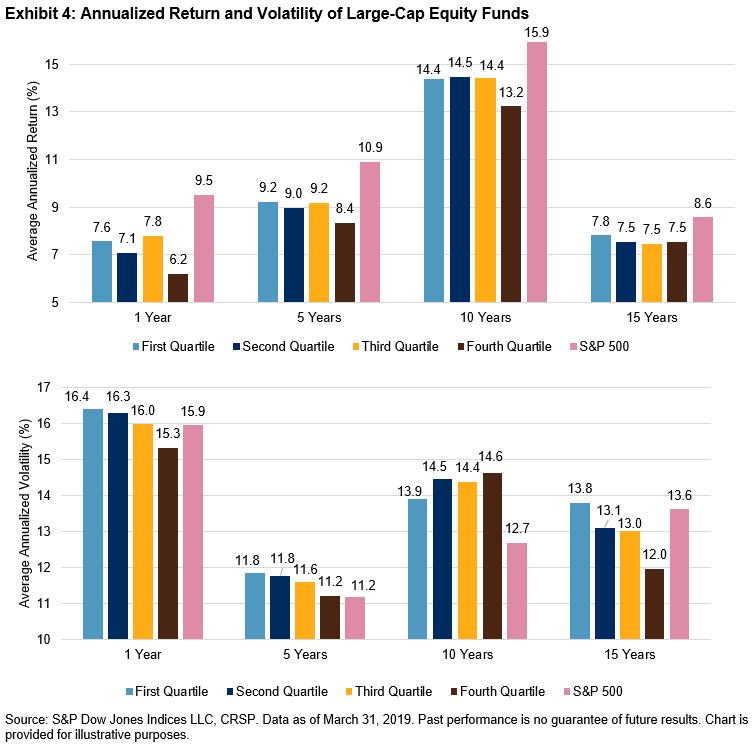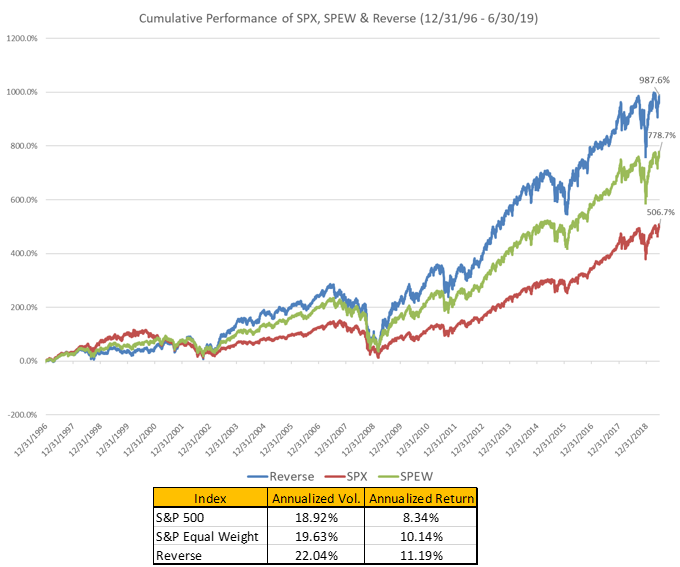Growth and value are two investment styles based on fundamental analysis. A growth company typically has promising earnings potential and tends to invest more in future growth rather than dividend payouts, while a value company tends to be more established, with stable growth rates and dividend distributions.
While most market participants are familiar with single-style investment strategies, rotating between growth and value could help enhance return potential. The recently launched S&P 500 Growth Value Rotator Index uses a simple momentum rotation signal to switch between growth and value strategies, and it outperformed single-style benchmarks and the broad equity market with lower risk (see Exhibit 1).
Studies[1], [2] have not shown any strong evidence that one style consistently outperforms the other. If we use the S&P 500 Growth and the S&P 500 Value to represent growth and value stocks, we can see that growth stocks outperformed value stocks 51% of the time, while value stocks produced better returns 49% of the time, both on a total return basis, from January 1995 to July 2019.
The goal of the S&P 500 Growth Value Rotator Index is to take advantage of the two styles. It shifts between growth and value strategies based on the momentum rotational signal, calculated as the 12-month return of the growth or value indices. The strategy is constructed as an index of indices, taking the total returns of the S&P 500 Growth Index and S&P 500 Value as the underlying benchmarks. At the end of each month, if the 12-month return of the S&P 500 Growth is greater than the 12-month return of the S&P 500 Value, the index allocates to the S&P 500 Growth, and vice versa. The existing index selection remains unchanged if the one-year returns of growth stocks and value stocks are the same.
The S&P 500 Growth Value Rotator Index delivered significant outperformance from February 1995 to July 2019, producing an average monthly excess return of 0.15% over the overall stock market, as measured by the S&P 500. In addition, the index outperformed the S&P 500 Growth and the S&P 500 Value by 1.38% and 2.75% on an annualized basis, respectively. The reduced volatility enabled the S&P 500 Growth Value Rotator Index to achieve the highest risk-adjusted return among the individual style indices and the S&P 500 (see Exhibit 1).

The outperformance of the S&P 500 Growth Value Rotator Index was most evident in long-term horizons. In the 10-, 15-, and 20-year periods ending in July 2019, the strategy demonstrated consistent outperformance over the single-style strategies and the broad market, on an absolute and risk-adjusted return basis (see Exhibit 2). Over short-term horizons (the three- and five-year periods), the S&P 500 Growth Value Rotator Index notably outperformed the S&P 500 Value and the S&P 500, while its return slightly underperformed the S&P 500 Growth. This is not surprising since the market has been in an expansion stage in recent years. Furthermore, the S&P 500 Growth Value Rotator Index exhibited the smallest maximum drawdown of 49.73%, compared with 56.82%, 53.40%, and 50.95% for the S&P 500 Value, the S&P 500 Growth, and the S&P 500, respectively.

[1] N. Beneda [2003] Growth Stocks Outperform Value Stocks Over the Long Term
[2] A. Ang [2018] Value Investing: The Long-term Appeal of the Underdog; Grow is not the Opposite of Value
The posts on this blog are opinions, not advice. Please read our Disclaimers.


















